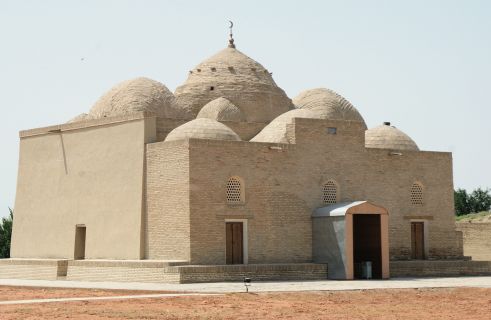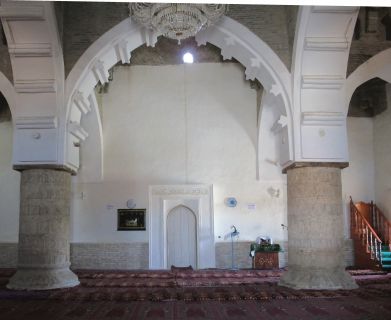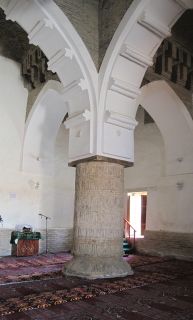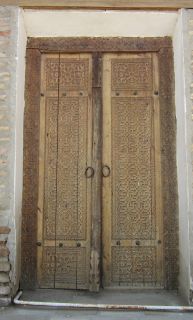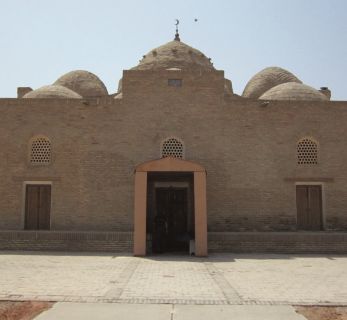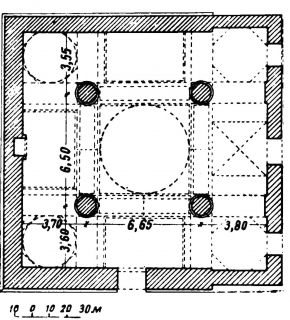Degaron Mosque
Uzbekistan Hazara 10th Century
Digaron, Degaron, Winter quarters Hazara, Hazara MosqueOlarak da bilinir.
Samanid-Karahan-Seijuk
The Degaron Mosque lies in the outskirts of the town of Hazara, approximately 100 km from Samarkand. The mosque is in a yard surrounded by a wall. It appears that the mosque and its precinct were a settlement in medieval times.
Some researchers, notably Eric Schroeder, date the building ta the 8th-9th century. However, Pugachenkova dates the building ta the 11 th century. The entrance section and façade of the structure have been completely renewed. Except far these two sections, the rest of the structure is original.
The building has a square plan. The entrance door is small, and there are two additional flat lintel doors to the sides of the central door. The Hazara Mosque has been built using the central dome plan. lts central dome is the highest and biggest dome of the structure. The central dome is carried on four circular plinths. The plinths are accented by pointed arches. The bricks of the central arches are set in terracotta. The central plinthes are, at the same time, paired with lateral and longitudinal arches. This forms a support far the overlaying elements by covering the central dome and the intervals. The tops of the adjacent interval sections of the central dome are covered with transverse vaults. The spaces at the comers are then covered with individual, small domes. Squinches are used at the comers as transition elements to the central dome. The walls are made of mud brick, and narrow towards the top.
Researchers differ in their comments concerning the history of the building. Due to the lack of an inscription, some believe that the building is a Christian or Buddhist structure, because during the early period there is no plan type similar to this one. This plan was, however, used in later structures. It is inevitable that this plan type would evolve, and there must have been similar examples in the Middle East.
Dating of the building is based on that the fact that it was built with mudbricks. There is no known restriction of the use of this material after the 11 th century. in this case, the mosque must have been built between the 10th and 12th century. Taking into account that the reign of the Seljuks began in the late 11 th century, it is possible that it could have been constructed during the Seljuk period.
Albaum, L. I., "Herren der Stepe, DeutscherVerlag derWissenschaften", Berlin, 1976, plate 21, s. 53. Cezar, M., "Anadolu Öncesi Türklerde Şehir ve Mimarlık", lstanbul 1977, s. 148-150. Schroeder, E.,"Standing Monuments of the First Period," (Arthur Upham Pope and Phyllis Ackerrnan, eds.) in A Survey of Persian Art !rom Prehistoric Times ta the Present. Tehran: Soroush Press, 111, 1938, s. 945.
Hazara

